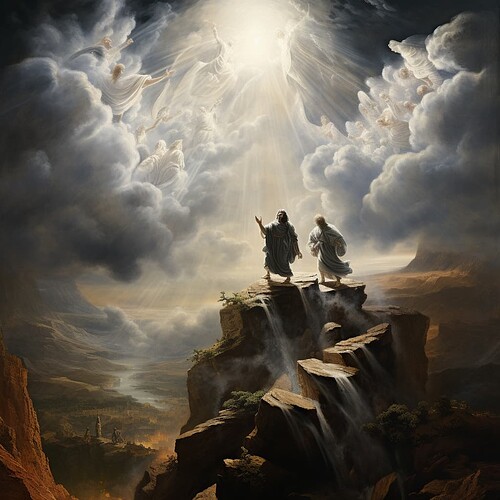![]() January 15: Matthew 17 - The Transfiguration and Lessons of Faith
January 15: Matthew 17 - The Transfiguration and Lessons of Faith
Witnessing the Glory of Jesus and Understanding True Faith
 Introduction
Introduction
On January 15th, our reading journey takes us to Matthew 17, an extraordinary chapter that includes the Transfiguration of Jesus, a critical teaching moment on faith, and a miraculous provision. This chapter presents pivotal moments in the ministry of Jesus and offers profound lessons for us.
 Matthew 17: The Transfiguration
Matthew 17: The Transfiguration
Matthew 17 opens with the remarkable event of the Transfiguration, where Jesus reveals His divine glory to Peter, James, and John. This moment, accompanied by the appearance of Moses and Elijah and the voice of God, affirms Jesus’ identity and mission.
Key Verse: “This is my Son, whom I love; with him I am well pleased. Listen to him!” — Matthew 17:5
 Key Themes and Reflections:
Key Themes and Reflections:
Divine Affirmation of Jesus: The Transfiguration serves as a divine endorsement of Jesus as the Son of God, connecting the Old Testament to the fulfillment in Christ.
Lessons on Faith: Jesus’ teaching on faith, especially in healing the demon-possessed boy, underscores the power of faith, even as small as a mustard seed.
Understanding of Jesus’ Mission: The conversation about Elijah and the suffering of the Son of Man helps the disciples understand the true nature of Jesus’ mission as the Messiah.
 Today’s Application:
Today’s Application:
Reflect on the importance of faith in our daily lives and the transformative power it holds. Consider how the revelation of Jesus’ divine nature impacts our understanding of His teachings and our relationship with Him.
 Hidden Gem:
Hidden Gem:
Did you know? The Transfiguration is a key moment linking the Old and New Testaments, with Moses representing the Law and Elijah the prophets, affirming Jesus as the fulfillment of both.
 Reflective Q&A:
Reflective Q&A:
![]() Matthew 17: The Transfiguration
Matthew 17: The Transfiguration
![]() Understanding Jesus’ Divinity: How does the Transfiguration enhance our understanding of Jesus as the Son of God?
Understanding Jesus’ Divinity: How does the Transfiguration enhance our understanding of Jesus as the Son of God?
A: This miraculous event not only affirms Jesus’ divine nature but also invites us to see beyond the physical realm, recognizing His authority and central role in God’s redemptive plan.
![]() The Power of Faith: What can we learn from Jesus’ teaching on faith in this chapter?
The Power of Faith: What can we learn from Jesus’ teaching on faith in this chapter?
A: Jesus emphasizes that faith, even in small amounts, has immense power. It’s not the size of our faith but its presence and trust in God that enables miraculous works and spiritual growth.
 Join the Discussion:
Join the Discussion:
How does Matthew 17 shape your perspective on Jesus’ identity and the role of faith in your life? Share your reflections and insights in the comments below!
#Transfiguration #Faith #Jesus #Matthew17 #BibleStudy #SpiritualJourney
![]() Exploring the Depths of Faith: Join us tomorrow as we continue to explore the teachings and miracles of Jesus in the Gospel of Matthew.
Exploring the Depths of Faith: Join us tomorrow as we continue to explore the teachings and miracles of Jesus in the Gospel of Matthew.
 Join the forum!
Join the forum!
Deepen your spiritual journey in our AIgniteScripture Community:
Free Members: Participate in vibrant discussions and access a range of biblical resources. Join here: 🌟 How to Join Page - Membership Options
Supporters Membership ($20/month or $200/year): Unlock deeper insights with exclusive content, personalized newsletters, and engaging community discussions. Sign up: 🌟 How to Join Page - Membership Options
![]() Stay Updated with our AIgniteScripture Newsletter: Get daily readings and reflections in your inbox. Join our spiritual journey through the Bible. Subscribe: https://newsletter.aignitescripture.com/
Stay Updated with our AIgniteScripture Newsletter: Get daily readings and reflections in your inbox. Join our spiritual journey through the Bible. Subscribe: https://newsletter.aignitescripture.com/
